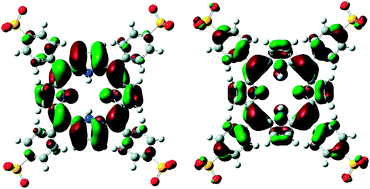The polarizability in solution of tetra-phenyl-porphyrin derivatives in their excited electronic states: a PCM/TD-DFT study
Abstract
Time dependent density functional theory and polarizable continuum model have been used to describe tetra-phenyl-porphyrin derivatives in different

- This article is part of the themed collection: Time-dependent density-functional theory

 Please wait while we load your content...
Please wait while we load your content...